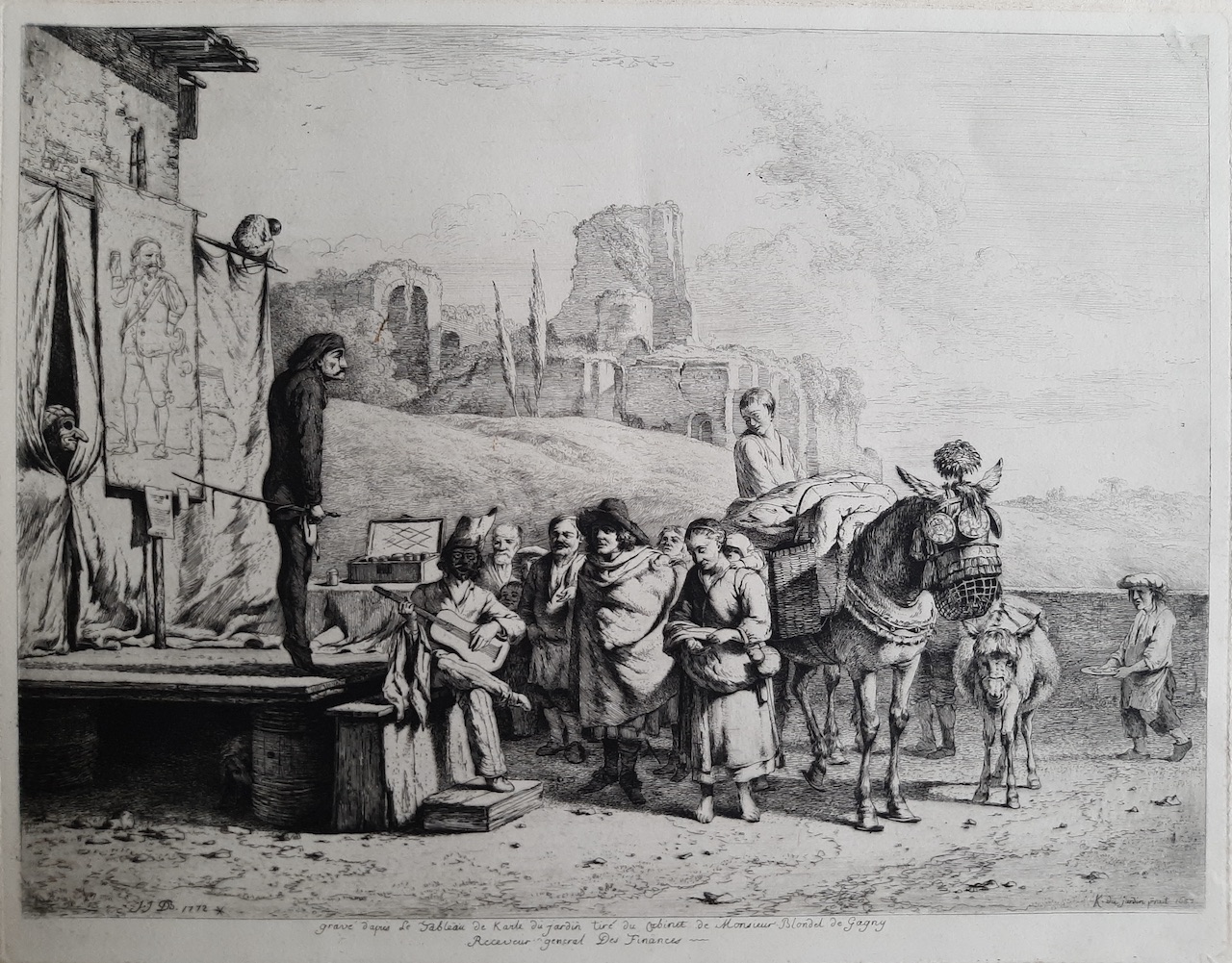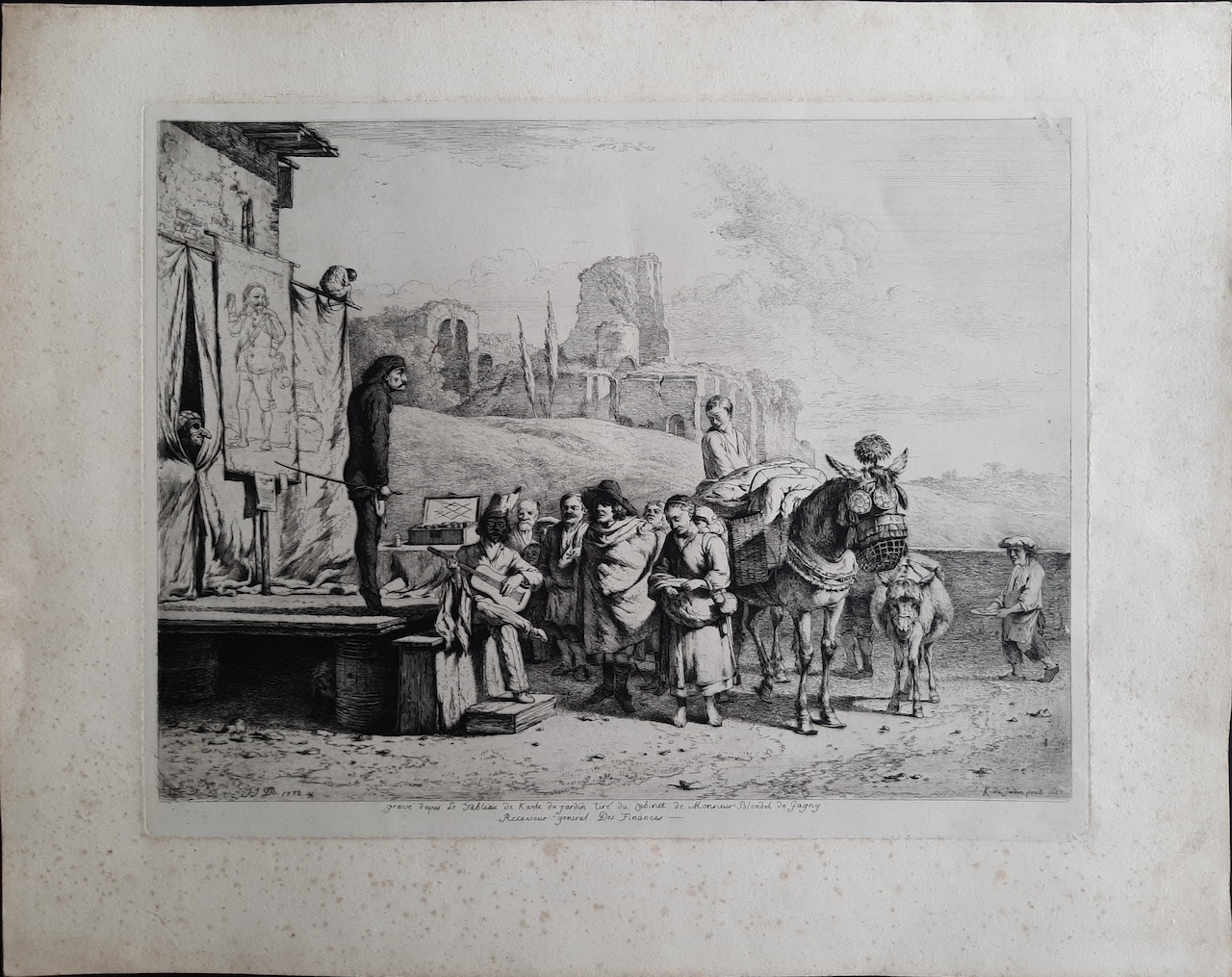Jean-Jacques de Boissieu (1736-1810)
Jean-Jacques de Boissieu (1736-1810)
Jean-Jacques de Boissieu: The Great Charlatans; after the painting by Karle du Jardin
Etching and drypoint, 1772
400,00 €
Description
Jean-Jacques de Boissieu (1736-1810)
Jean-Jacques de Boissieu: The Great Charlatans; after the painting by Karle du Jardin
Etching and drypoint, 1772
Proof on china paper applied on wove paper. 4th state out of 7 with the asterisk following the signature. Inside the print, at the lower right corner: ‘K. Du Jardin pinxit 1657′, and, at the lower left corner: ‘J.-J. DB 1772′. Outside the square line, in the center, the mention ‘gravé d’après le tableau de Karle du Jardin tiré du Cabinet de Monsieur Blondel de Gagny / Receveur Général des Finances’.
Dimensions of the sheet : H. 350 mm x L. 440 mm – Dimensions of the square line : H. 246 mm x L. 329 mm.
References: Marie-Félicie Perez, L’oeuvre gravé de Jean-Jacques de Boissieu 1736-1810, n°63 page 146 & 147. 1994, Editions du Tricorne.
Condition: some scattered foxing in the margins.



Reviews
There are no reviews yet.